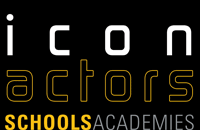
The Repin Academy, Saint Petersburg
Address: 17, Universitetskaya Naberezhnaya
Metro: Vasileostrovskaya, Admiralteyskaya
Getting there: From Vasileostrovskaya exit, turn right then right again onto 7-ya Liniya and walk straight down the street until you reach the river. Turn left along the embankment, and the Academy is just over 100m ahead. What’s nearby? Neva River, Menshikov Palace, Blagoveshensky (Annunciation) Bridge
http://voiceofrussia.com/radio_broadcast/2249159/48475949/
Ancient icons acquire second life
Old icons from a reserve museum in Pskov acquire a second life in the workshops of the St.Petersburg Academy of Fine Arts. Experts have restored more than 400 icons and paintings over the past 40 years. Most of the restoration work is done by the Academy’s students under the watchful eye of their highly experienced masters.
Old icons from a reserve museum in Pskov acquire a second life in the workshops of the St.Petersburg Academy of Fine Arts. Experts have restored more than 400 icons and paintings over the past 40 years. Most of the restoration work is done by the Academy’s students under the watchful eye of their highly experienced masters. The 15th-17th century icons undergo full-scale restoration in which the icon’s color layer is made more pronounced being separated from later intrusions.
Icons from Pskov began to arrive right after the opening of the restoration department at the St.Petersburg Academy of Fine Arts nearly 40 years ago. In those days the Academy was known as the Repin Institute. Many of the icons were captured by the Nazis but were returned shortly after the end of the Second World War.
Icons arriving at the St.Petersburg Academy are often in poor condition. The restorers’ first step to bring them back to life is preservation of the original parts and their consolidation. This important mission falls on the students. Olga Vasilyeva, who oversees the collection of icons at the Pskov Museum, said:
“Highly qualified restorers are not interested in doing preservation work. But the students are required to, under their academic program. And the museum benefits from it.”
The students face ever more challenges as they toil to hone their skills under the supervision of the professionals. This is the only way to train professionals, said Yuri Bobrov, Pro-Rector for Research at the St.Petersburg Academy of Fine Arts.
“There is a mere 2 or 3 thousand restorers in Russia, and only a small faction of them specialize in icons. So our training programs are a good investment in the future. By teaching icon restoration we preserve our culture for the generations to come,” said Yuri Bobrov.
Among the icons that arrive from Pskov there are plenty of masterpieces. As student restorers separate layer after layer, they come across quaint inscriptions and as whimsical signs. This is where the big-name restorers and art historians step in to assist in the restoration effort.
Restoration work offers students a profound insight into the basics of their future trade and a clue to the secrets of icon-painting as seen by the Pskov masters. The Pskov icon-painting school is truly one of a kind. A Pskov icon invariably catches a master’s eye amidst other medieval artworks. Having learned from the Byzantine masters, Pskov painters spent decades to develop their own methods of icon-painting. The resulting technique is characterized by originality of style, from the treatment of wood to the composition of images.
Even though restoration is a time-consuming, back-breaking process, all restoration work for the Pskov museum is done for free. Nevertheless, the result is worth the effort since the restored icons can be put for public view without any fears that they might be exposed to damage. In the opinion of Olga Vasilyeva, Old Russian art should go on display rather than gather dust in the storerooms.